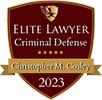The Use of Circumstantial Evidence in Illinois Criminal Cases
 If you turn on any crime drama show, chances are you have heard a prosecutor or defense attorney utter the phrase, “you only have circumstantial evidence.” As a viewer of a television program, you might just hearthese words and not think about what circumstantial evidence is or the role it plays incriminal defense cases. Circumstantial evidence is not just a phrase you hear television lawyers throw around, however, but a real type of evidence that is at issue in criminal proceedings.
If you turn on any crime drama show, chances are you have heard a prosecutor or defense attorney utter the phrase, “you only have circumstantial evidence.” As a viewer of a television program, you might just hearthese words and not think about what circumstantial evidence is or the role it plays incriminal defense cases. Circumstantial evidence is not just a phrase you hear television lawyers throw around, however, but a real type of evidence that is at issue in criminal proceedings.
Direct vs. Circumstantial Evidence
There are two types of evidence that can be used in criminal trials. Direct evidence is actual physical evidence used to link a defendant directly to a crime. This could be a video surveillance tape, a fingerprint at the crime scene, or any other evidence that directly points to a defendant committing a crime.
According to Illinois jury instructions, circumstantial evidence is “the proof of facts or circumstances which give rise to a reasonable inference of other facts which tend to show the guilt or innocence of a defendant.” Essentially, this is evidence that is not actually rooted in hard, physical proof, but instead includes the circumstances that surround a defendant and point to their innocence or guilt. Further, Illinois instructs juries to use circumstantial evidence combined with other evidence presented in the case to arrive at a verdict.
Circumstantial evidence is used so that inferences can be made to link a defendant to a crime. Common examples can include resisting arrest, a motive to commit the crime, the opportunity to commit the crime, evasions by the defendant, denials, inconsistencies, the presence of a defendant at the scene of the crime, and any other conduct of the defendant that could be used to draw inferences to a defendant’s guilt.
Prior Illinois Law
In the past, Illinois made special considerations around the use of circumstantial evidence. Previously, circumstantial evidence was only allowed to be used exclusively for a conviction of a defendant if the evidence excluded every reasonable possibility that the defendant might be innocent.
Now, circumstantial evidence can be used in addition to direct evidence. All evidence is considered by the trier of fact (the jury) or a judge in the event it is not a jury trial. This evidence can all be used to determine whether the prosecution has proved beyond a reasonable doubt that a defendant is guilty of the crime of which they are charged.
Let Us Help You Today
If you have been charged with a criminal charge, then you need an attorney. Passionate Rolling Meadows criminal defense attorney Christopher M. Cosley will work diligently to present every piece of evidence available to prove your innocence. Attorney Cosley understands that circumstantial evidence can play a huge part in a criminal trial and will present contradictory evidence at every available opportunity.
Source:
http://www.illinoiscourts.gov/circuitcourt/CriminalJuryInstructions/CRIM_03.00.pdf






















